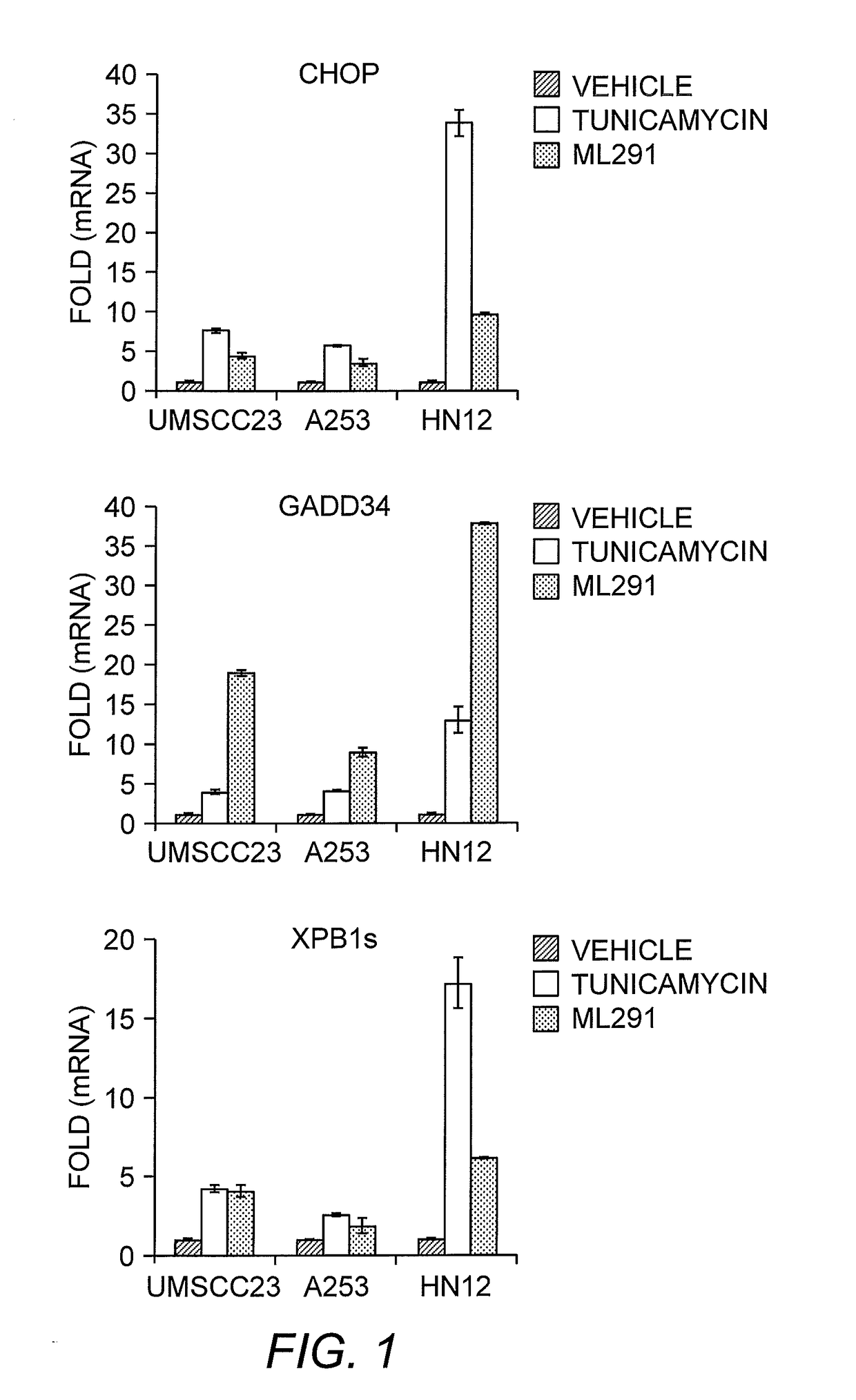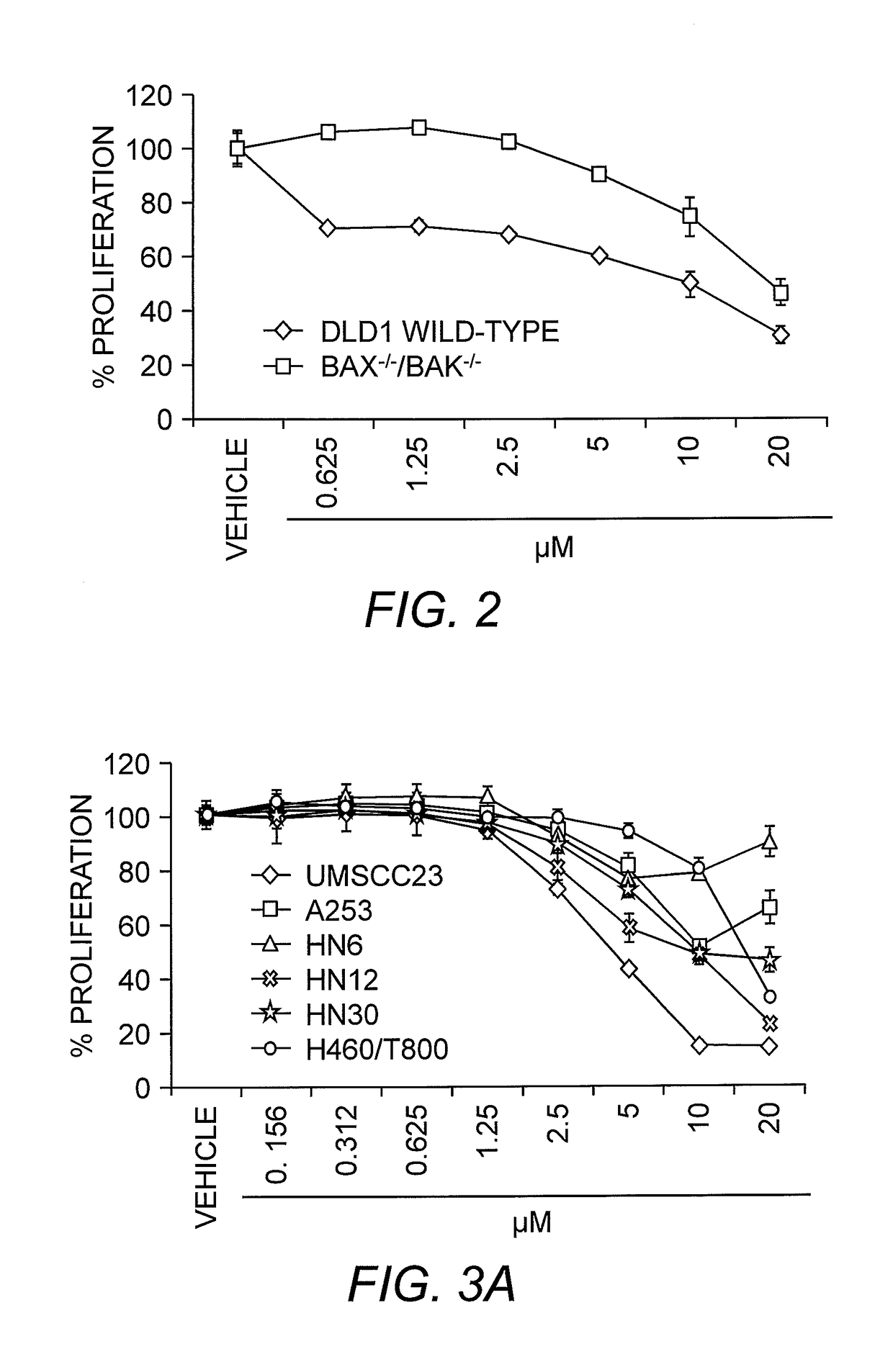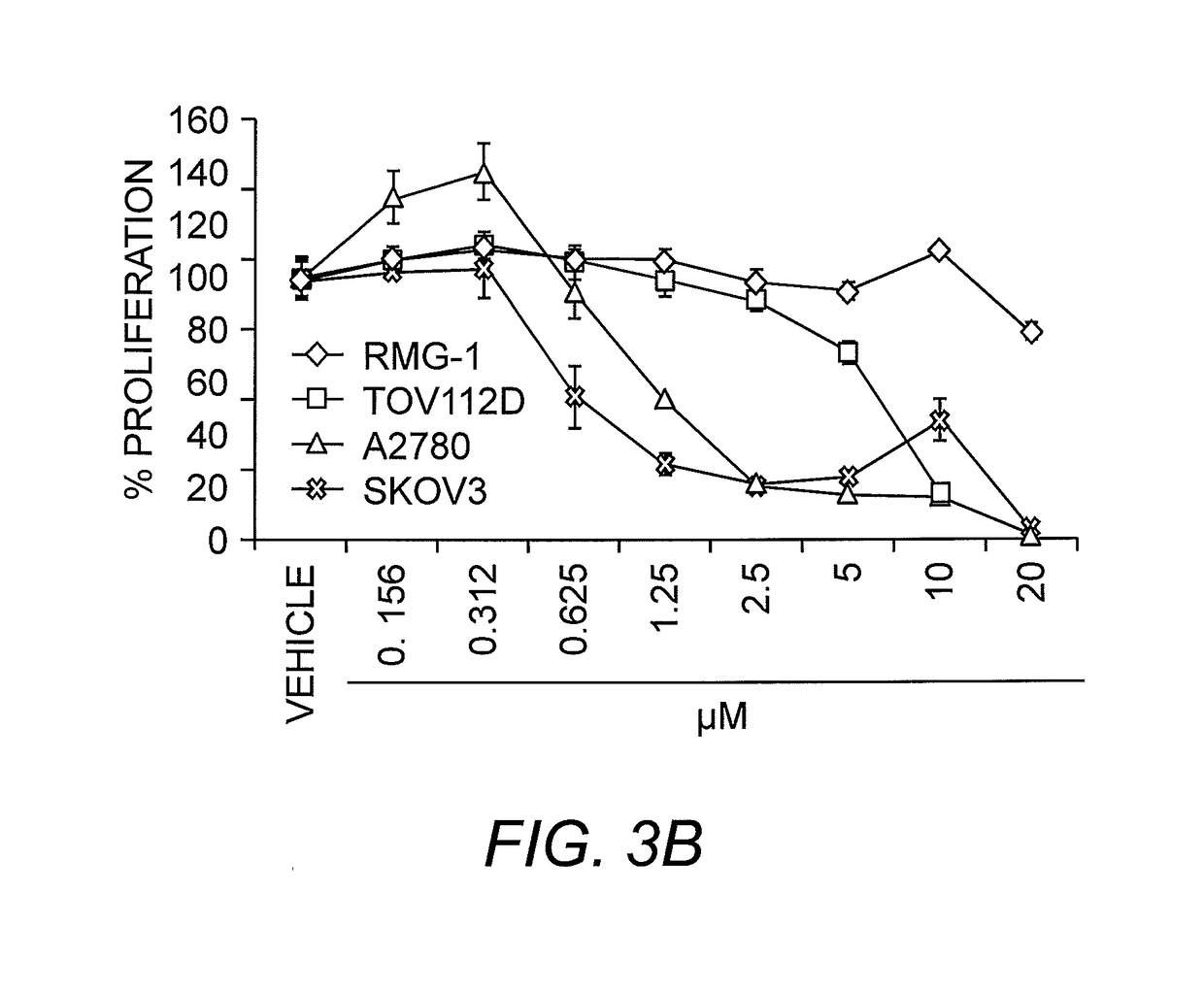Compounds and methods for activating the apoptotic arm of the unfolded protein response
a technology of unfolded protein and apoptotic arm, which is applied in the preparation of organic active ingredients, sulfonic acid amides, organic chemistry, etc., can solve the problems of cell death, reduced translation initiation rate, and dyschondoplasia in the offspring of chickens
- Summary
- Abstract
- Description
- Claims
- Application Information
AI Technical Summary
Benefits of technology
Problems solved by technology
Method used
Image
Examples
example 1
Materials and Methods
[0072]Protocol for UPR-CHOP Primary Assay. The purpose of this assay was to detect activators of the PERK-eIF2α-CHOP (apoptotic) arm of the Unfolded Protein Response pathway.
[0073]Materials. DPBS and Heat-inactivated Fetal Bovine Serum were from Hyclone; F12 nutrient mix HAMs medium, Penicillin / Streptomycin, liquid, L-glutamine (100×), MEM Non-Essential Amino Acids Solution 10 mM (100×), and Trypsin-EDTA 0.25% were from Invitrogen; T225 TC Flasks were from Nunc; 40 μm cell strainers were from BD; 1536-well white solid bottom TC plates were from Aurora Biotechnology; Tunicamycin was from Sigma-Aldrich; and STEADY-GLO Luciferase Assay System was from Promega.
[0074]Procedure for Expanding and Maintaining Cells. CHO-CHOP cells were seeded into T225 flasks at 3.75×105 cells. Cells were passaged twice a week. Confluency was maintained at 2, ˜2.5×107 cells were typically observed per T225 flask. Once the cells had reached confluency, old medium was aspirated and the fl...
example 2
Library Screen for PERK / eIF2α / CHOP Activators
[0080]A high-throughput screen of the NIH Molecular Libraries Small Molecule Repository (MLSMR) of >350,000 compounds was carried out using complementary cell-based reporter assays using stably transfected CHO-K1 cells that specifically identify activators of the PERK / eIF2α / CHOP (apoptotic), or the IRE1 / XBP1 (adaptive) UPR sub-pathways.
[0081]The MLPCN library of approximately 330,000 compounds was tested in the UPR-CHOP primary screen utilizing a luciferase-based reporter expressed in a CHO cell line to identify activators of the CHOP apoptotic pathway. During the performance of the screening campaign, 1125 compounds with activity ≧40% at a single concentration of 10 μM were identified. Liquid samples for 1125 compounds were obtained.
[0082]The liquid samples were first confirmed at a single-point concentration of 10 μM in the NTR1 HCS primary assay. Of the liquid samples, 674 compounds were confirmed to have at least 32% activity at a 10 ...
example 3
Structure-Activity Relationship (SAR) Analysis
[0084]The high throughput screening effort and subsequent validation produced two chemotypes, which were further explored by SAR analysis for potency, selectivity, the absence of reactive functionality, synthetic accessibility, physiochemical properties, and hit rate in unrelated PUBCHEM assays. SAR testing of re-constituted powders encompassed dose response testing of compounds in two assays: UPR-CHOP and UPR-XBP1 assays. The sulfonamidebenzamide series and the benzothiazole series, represented by SID 104222717 and SID 104222735, respectively, were found to have low micromolar potency for CHOP while not exhibiting activity on XBP1 (>70-80 μM).
[0085]Both chemotypes were developed in parallel, and the UPR CHOP and XPB1 assay data were used to drive the SAR effort. Once promising compounds were identified that met or were close to meeting the probe criteria (CHOP EC5010-fold), then compounds were assessed in more elaborate secondary assays...
PUM
 Login to View More
Login to View More Abstract
Description
Claims
Application Information
 Login to View More
Login to View More - R&D
- Intellectual Property
- Life Sciences
- Materials
- Tech Scout
- Unparalleled Data Quality
- Higher Quality Content
- 60% Fewer Hallucinations
Browse by: Latest US Patents, China's latest patents, Technical Efficacy Thesaurus, Application Domain, Technology Topic, Popular Technical Reports.
© 2025 PatSnap. All rights reserved.Legal|Privacy policy|Modern Slavery Act Transparency Statement|Sitemap|About US| Contact US: help@patsnap.com



